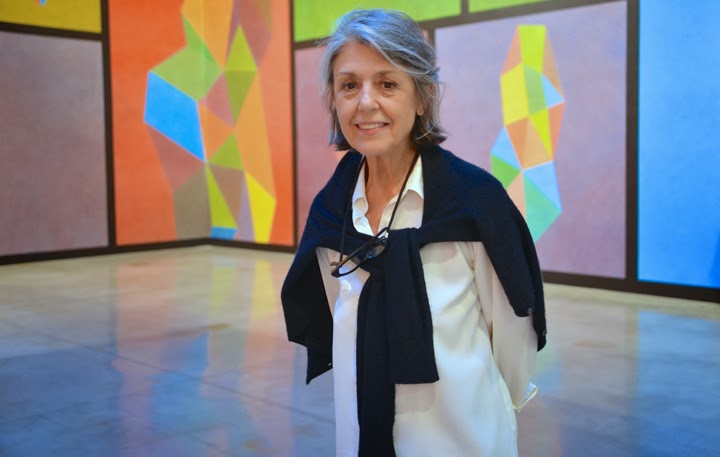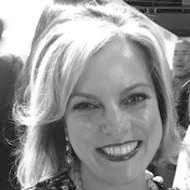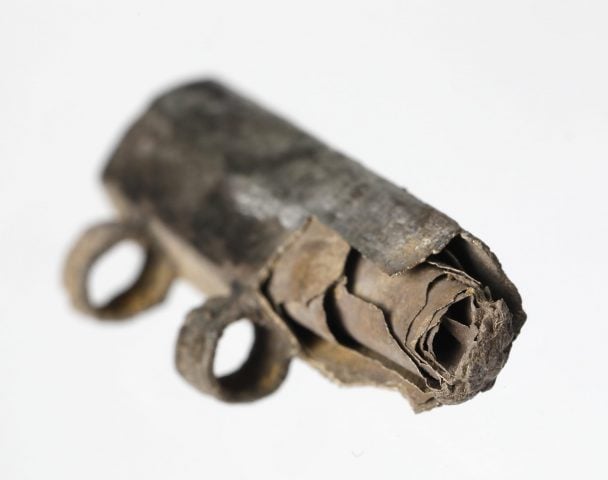Shoptalk is an interview series about the experiences of women art dealers and industry insiders of various generations, as told to Artnet’s Art Detective columnist Katya Kazakina. Artnet News Pro members get exclusive access—subscribe now. Part 1 of Kazakina’s interview with dealer Paula Cooper was published last week.
Paula Cooper Gallery will celebrate its 56th anniversary in October—one of the longest runs for a contemporary art gallery that remains relevant to-date.
Its founder, Paula Cooper, was 30 when she opened in SoHo in 1968, the first gallery in a district that would soon become an art epicenter. Her nearest female contemporaries, fellow matriarchs of the art world, launched much later: Marian Goodman in 1977 and Barbara Gladstone in 1980. Larry Gagosian, for his part, started his empire selling posters in a parking lot in Los Angeles in 1979.
They have been the greatest and most transformational generation of art dealers in modern art history—and now that generation is sunsetting. Gladstone died this past year at 89; Goodman, 96, has stepped away from her gallery; and Gagosian turned 79 this year. “Everyone in this room is gone,” Cooper, 86, said earlier this month, showing me art in her living room. “Deceased. Deceased. Deceased.” As we talked, more sad news came about art dealer Pierre Levai and curator Kasper König.
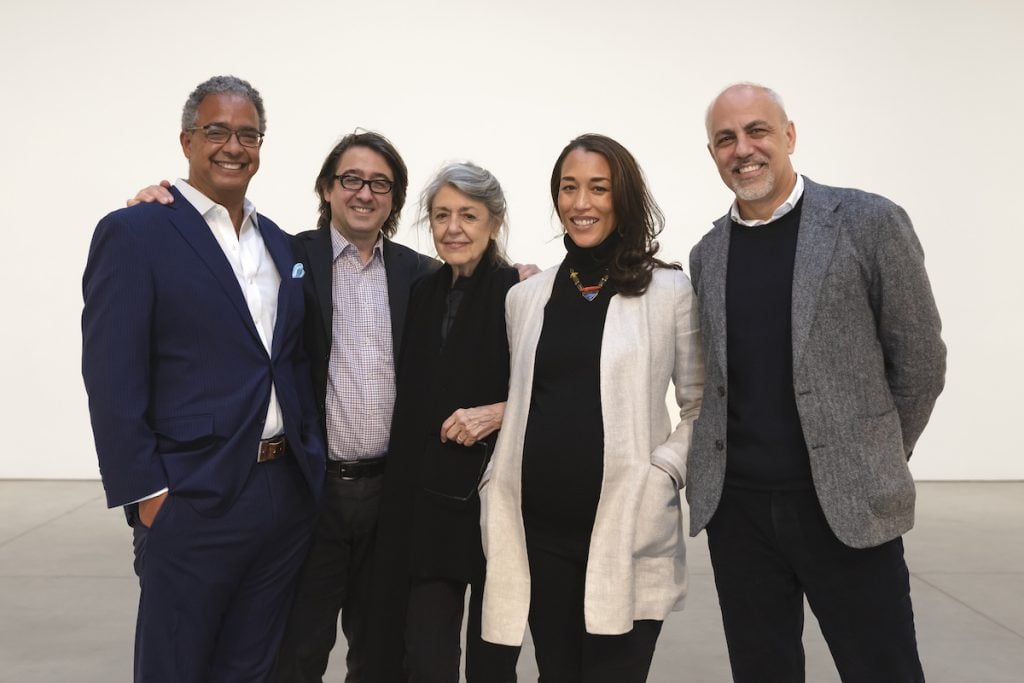
Steve Henry, Lucas Cooper, Paula Cooper, Alexis Johnson, and Anthony Allen. Photo courtesy of Paula Cooper Gallery.
Succession is very much on Cooper’s mind—as it is on the minds of her peers. Can the institutions they created transcend them? Will they survive and thrive? Three years ago, Cooper anointed her son Lucas Cooper and three directors as partners to carry on her legacy. But she’s had a hard time stepping back and letting go.
The second part of our interview covers this delicate topic, as well as Cooper’s views about the art business—its changes and dramas. An edited version follows below.
Where do you see your gallery in 10 years?
Oh, my goodness. I have no idea. I won’t be around.
You don’t know that!
Oh, come on! But I certainly won’t have much input. I hope they make the right decisions for them. They can change the name of it. They can do anything they want. I have no idea of perpetuating a dynasty.
You named your son Lucas as a managing partner. Will he be in charge?
Of course, he is my son, so he’ll always be crucial part of the gallery. They are all knowledgeable and experienced. They have different strengths that are complimentary. They are an extraordinary crew.
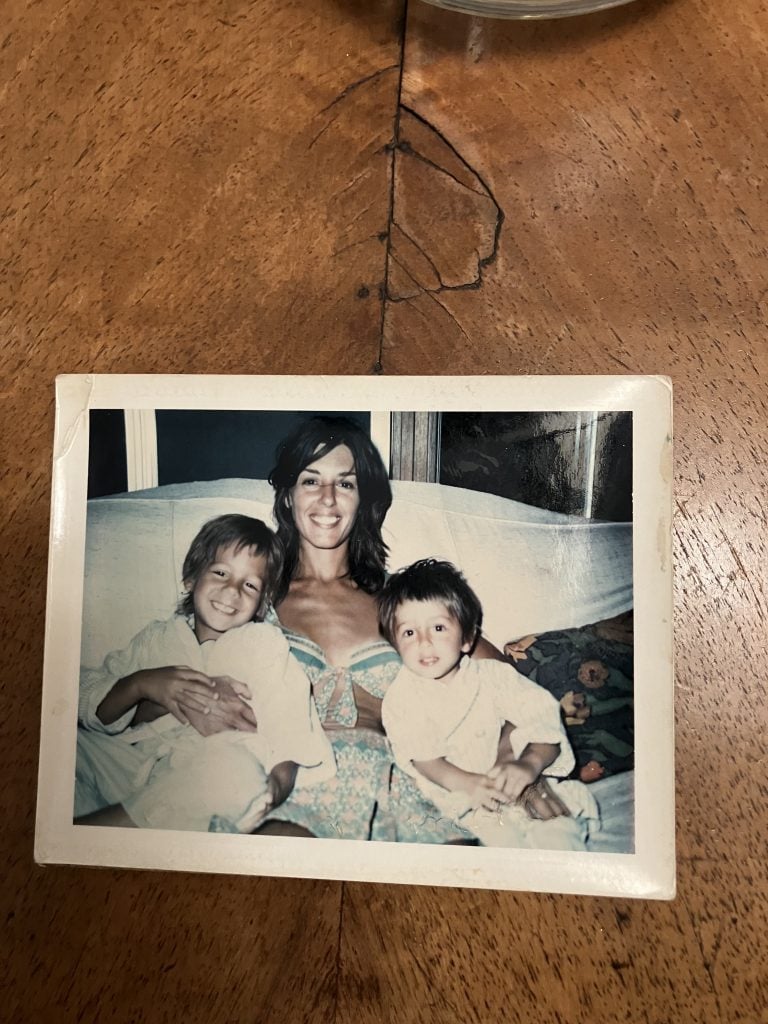
Paula Cooper with her sons, Nicholas, left, and Lucas, early 1970s, soon after opening the gallery. Courtesy: Paula Cooper Gallery, New York.
What about the eye?
Naturally, they each see things a bit differently. But they agree on the importance of the artists.
Is it hard for you to let go?
It is difficult to let go, but I am slowly learning. Everyone is very respectful. They always consult with me. I’ve told them, while I am alive, I want works to be presented the way I think they should be presented.
Let’s talk about auction houses. Are you a fan?
I must say that auction houses are killing art.
Hundreds of works come up every single week. There’s just too much around. It’s harming artists. They’ll include a few more important paintings in with a lot of drawings, a lot of works on paper. You can pick up anything at auction for $500, $1,000.
What I don’t understand is how auction houses are getting away scot-free. They’re accepted as a bona fide part of the art world, which they aren’t. They’re a separate kind of thing from galleries or dealers. Nobody is pointing out that the most destructive part is the auction.
Some artists are too young to be at auction. They’re destroying these young kids by auctioning them. I just don’t get it: Why are auction houses off the hook?
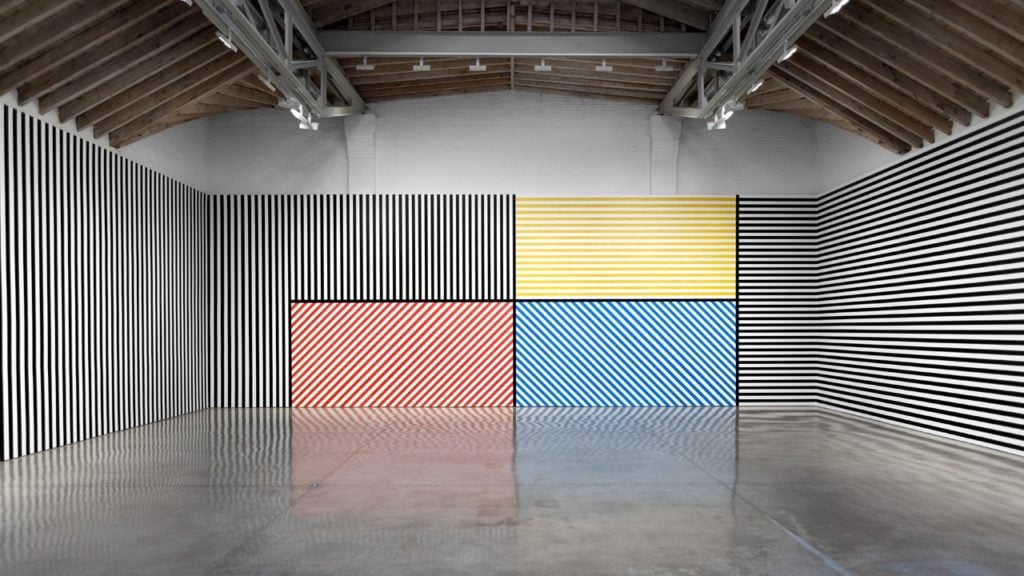
Sol LeWitt,Wall Drawing #368(1982). Photo: courtesy of Paula Cooper Gallery.
So, you feel that auction houses are taking away business from galleries?
Are you kidding? Of course they are! Especially when they sell art by private treaties.
I’m not saying auctions shouldn’t exist. I’m saying they shouldn’t be doing private sales, too. It’s an unfair advantage. They know everybody in the world.
The art market has expanded so hugely. There’s too much speculation. There’s too much inferior art around.
At least at art fairs people can meet clients. Yes, they’re expensive, but they’re not taking away business or destroying markets.
Many dealers have said that art fairs put a huge amount of financial pressure on them.
I can see where younger galleries collaborate or cooperate. Maybe two or three galleries share a stand. I think the value is in the people that you see and get to talk to.
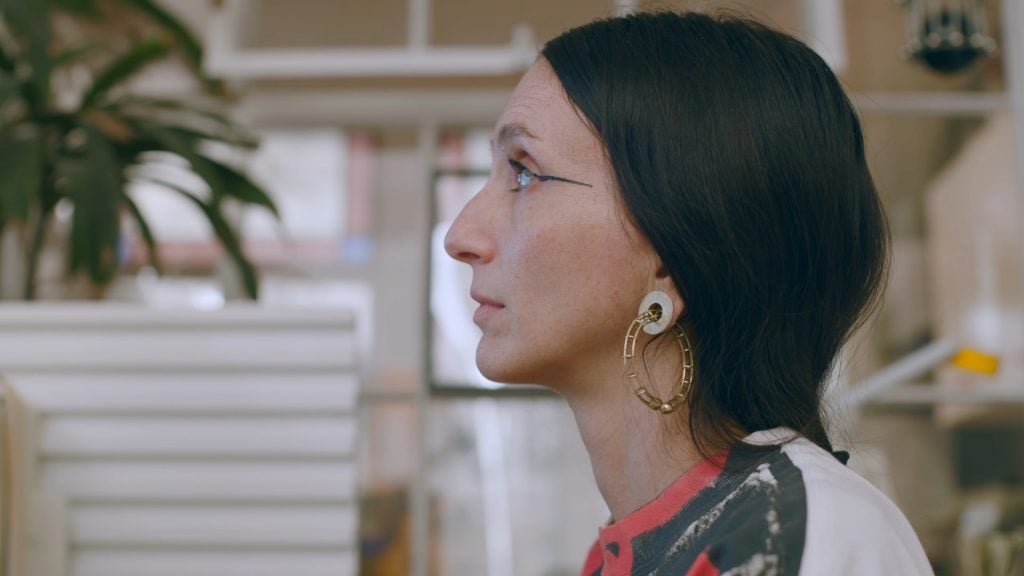
Tauba Auerbach in a production still from the “Art in the Twenty-First Century” Season 11 episode, “Bodies of Knowledge,” 2023. © Art21, Inc. 2023.
There’s been a lot of speculative trading in the art market, including for some artists you represent. I remember Tauba Auerbach’s auction market was crazy when she joined your gallery. Within a couple of years, her prices went from emerging to $2.3 million in 2014. Then they crashed. How is she doing now?
Thank God, she has survived this. Her market is strong, but it was scary for a while. This guy, a nice collector, buys something at a benefit auction and immediately sells it at auction for three times, four times the price. Jesus! How ridiculous for a young artist.
But she started doing different kind of work. She’s so creative. She kept growing and changing and exploring. She is interested in science and music. She learned to blow glass and is a supreme glassblower now. Tauba’s mind is very different from any other artist that we work with. She wants to know everything about something; to turn it and examine every aspect of it. And you get that from her work.
What are her primary prices now?
She’s in the $200,000 range.
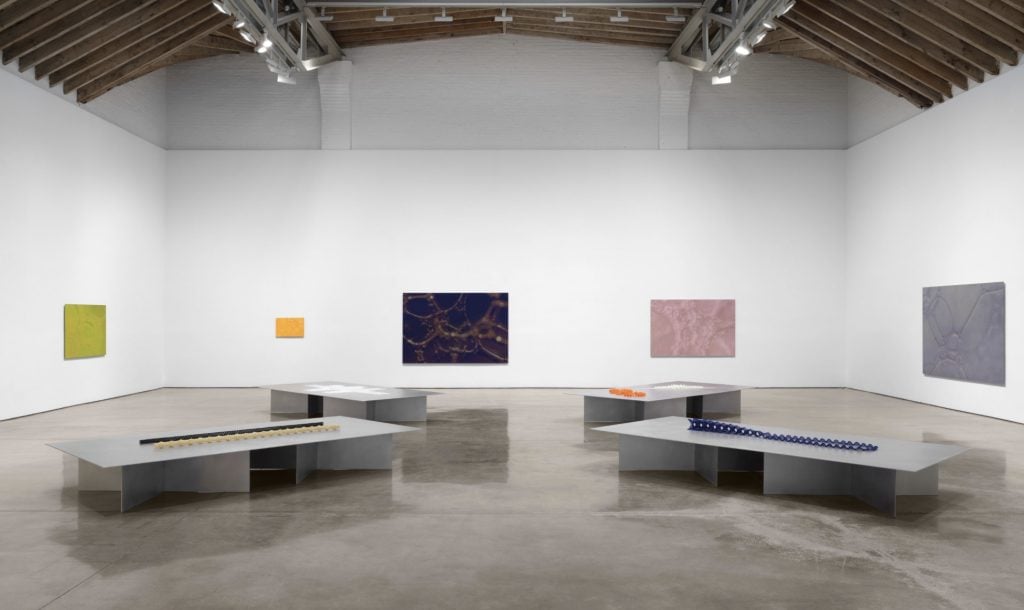
Installation of Tauba Auerbach’s latest show, “Free Will,” at Paula Cooper in 2023. Courtesy: Paula Cooper Gallery.
Another question I have asked art dealers—and I have yet to get a satisfying response—is why galleries don’t cut prices, even when demand for artists’ work dries up. Is there a time when maybe a gallery and an artist can agree to lower the prices? Have you ever done it?
It’s tough. You can’t be asking $100,000 for something and then suddenly ask $40,000 or $50,000. It’s something that has to be handled very, very delicately. And perhaps you cut back and do things one by one so that it’s a very private negotiation instead of a big across-the-board drop. It’s very tricky.
Each artist is different. Some artists produce a lot of work, and some artists don’t produce much work, or some people make very small works and some people make huge works.
I am sorry I’m not giving you just a straight yes or no answer.
It seems to be a difficult question. Everybody I’ve asked has really struggled with it. Why is it so difficult?
Because art is a luxury. Like you don’t put on sale valuable diamonds. And it’s even beyond luxury, right?
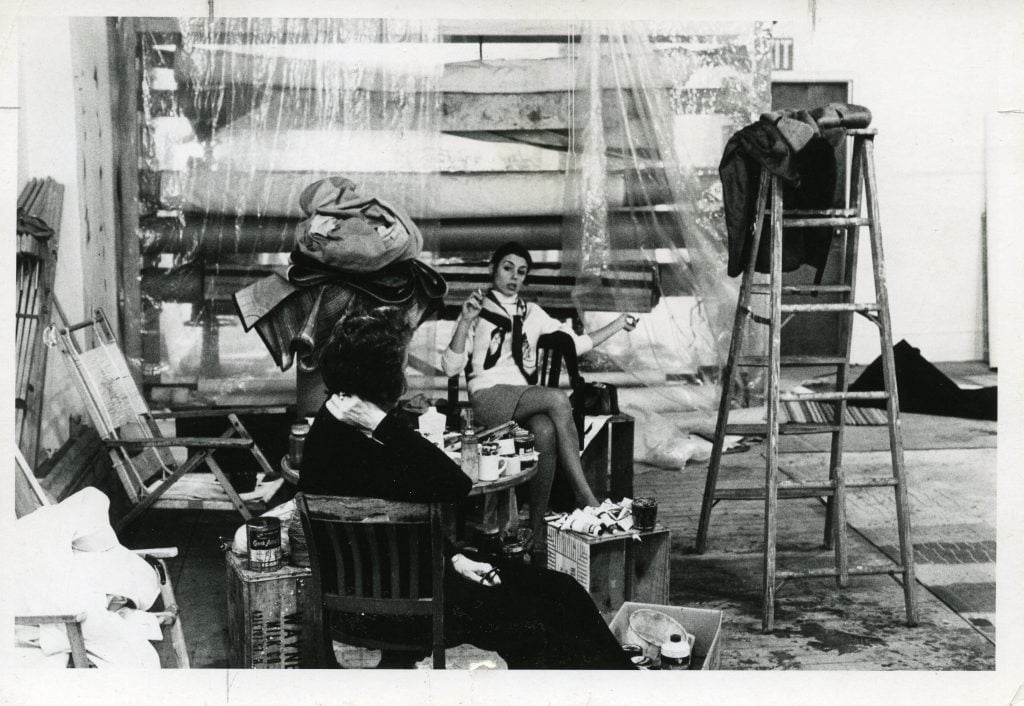
Paula Cooper in Alan Shields studio with Vera List, c. 1960s. Courtesy: Paula Cooper Gallery, New York. Photo: Alan Shields
When I spoke with Elizabeth Dee about this issue, she suggested regrouping. Instead of making huge paintings, make smaller paintings or work on paper. Or do editions that are less expensive and can bring in new collectors to the work. There must be ways.
But not all artists can work in all scales. Some people who work at a very large scale can’t make a successful small painting. Or some people who work very small can’t make a very large painting. It’s a special thing when an artist can make something huge and can make something small and they’re just as successful.
Like Carl Andre, his tiny works are so amazing because you look at them and somehow, they could be any size in your mind. I remember we once showed a work, Fermion, in front of the Seagram’s building. And this small, very condensed piece, it held the whole tall building. It was amazing! So, scale is just as important as color or shape. Everybody can’t make a small work.
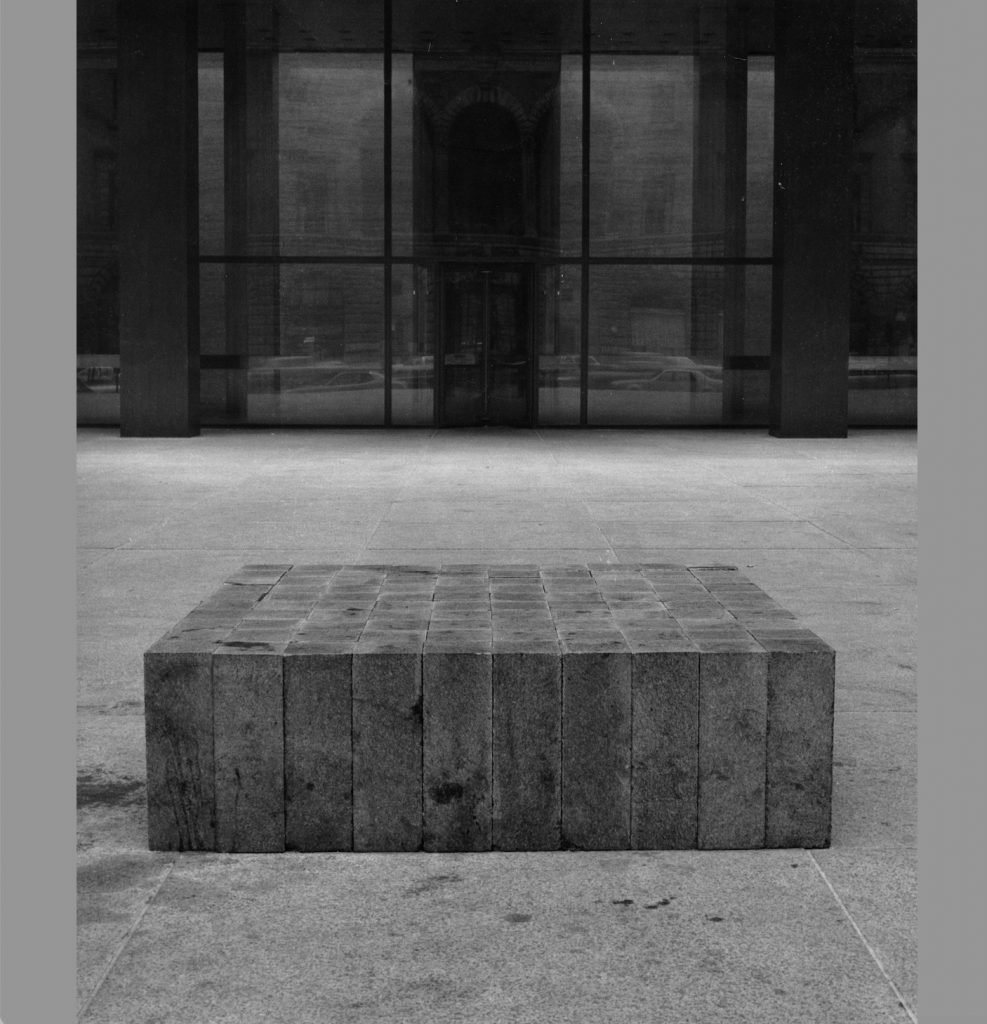
Carl Andre, Fermion, 1981, granite (100-unit solid). © 2024 Carl Andre / Artists Rights Society (ARS), New York. Photo: Eeva Inkeri. Courtesy Paula Cooper Gallery, New York.
I remember you showed these tiny paintings of saints by Rudolf Stingel in your gallery years ago and I was surprised by their scale compared to the huge scale he normally works in.
And they held the wall.
You’ve done popups in other cities, like in Los Angeles and Paris and Palm Beach, most recently. But you never expanded beyond New York. How come?
It doesn’t interest me at all. I don’t want to have to worry about spaces. It’s so distracting. I’d like to concentrate on the art, and I want to be small, to be intimate and more focused on how we present work.
I always had the idea when I was young of being a gentleman art dealer,
Like a gentleman farmer?
What it means is you work very privately and discreetly with your clients, and it’s very focused and it’s very personal, and it’s about the art and the artist. It’s not crude or crass. It’s civilized. And that’s what we want to continue to do.
You don’t want to get overextended?
Well, some people don’t. Gagosian doesn’t seem to be overextended at all. He seems to have handled this—however, whatever his deals are—very well.
But he’s not a gentleman dealer, is he?
You can’t be if you are so big. No, you’re a big business.
The motivation for everything now, unfortunately, is money. I think that a few of these big galleries will become even bigger. Gagosian will become a part of LVMH, I’m sure of that. And then Hauser and Wirth is the luxury lifestyle brand. It encompasses everything: restaurants, hotels. They do some very good shows, though. The Guston show was amazing. The Eva Hesse show was great—and it didn’t even get reviewed until the last week. What is wrong with the Times?
How do you know if the artist is the right fit for the gallery? And what are you looking for in an artist?
I’ve always liked challenging work. Does the work continue to interest me? Does it continue to engage me, does it continue to make me think? I was very slow. I would have artists in a group show, then I’d have them in a three-person show. And then I’d have them in a two-person show. I didn’t grab. And then I realized we reached a certain point where people were just grabbing people.
We work differently with artists. I’ve never had a contract with an artist in my life. I’ve always worked on a 60/40 split, not a 50/50 split. I always felt that the artist should get at least a little more. We don’t steal artists, either.
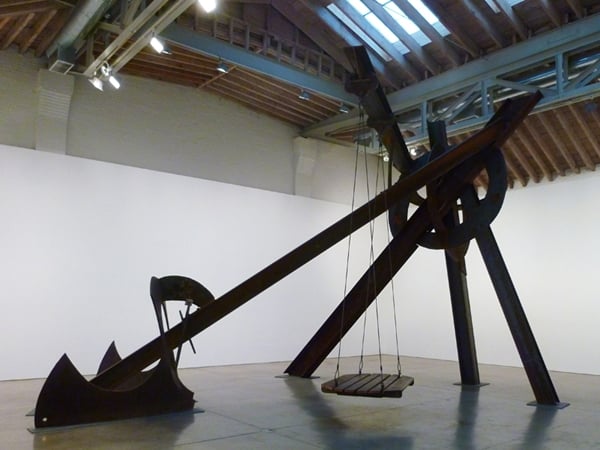
Mark Di Suvero’s Paula’s Pleasure (2011) at Paula Cooper Gallery in 2012. Photo: Benjamin Sutton.
How have you weathered various market cycles, all the ups and downs, over the years?
I don’t remember panics. Maybe because I’ve always been so conservative. I’ve never had huge loans. I don’t like to owe anyone anything. Which has been extremely helpful during any downturn.
Somebody told me that there was a downturn in the 1970s and I said, “Well, we didn’t notice it. We were so small. The only place we could go was up.”
Wait, you didn’t notice that the sales slowed down at certain times?
Of course you would notice it. I’m sure we worried a lot, but it wasn’t a huge disaster because apparently it changed soon enough so that there wasn’t permanent damage. I think, for us, the downturns were when we had built up artists, they became really successful, and then they left after so many years. That would be more of a disaster.
Were you ever on a brink of closing?
Never. Ever.
Please click here if you missed Part I of my interview with Paula Cooper, which focused on the roots of her life in art. The next installment, Part III, will look at the dealer’s unique friendships with artists and why she was OK when one of her artists committed a career suicide.
